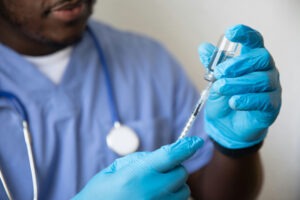Beacon Therapeutics has announced a successful $170m Series B funding round, led by Forbion, to accelerate the development of its ophthalmic gene therapies, including its lead asset AGTC-501.

The funding will support ongoing clinical trials for X-Linked Retinitis Pigmentosa. Credit: Marina Vitale on Unsplash.
Subscribe to our email newsletter
The funding will support ongoing clinical trials for X-Linked Retinitis Pigmentosa (XLRP) and advance the company’s Dry Age-related Macular Degeneration (dAMD) programme.
The investment round included contributions from existing backers Syncona, Oxford Science Enterprises, and the University of Oxford, alongside new investors Advent Life Sciences and TCGX.
With this latest funding, Beacon’s total capital raised to date reaches approximately $290m.
AGTC-501 is currently undergoing a registrational clinical trial for XLRP treatment.
The therapy aims to deliver the full-length RPGR protein to address the photoreceptor damage caused by the disease, which affects both rods and cones in the eye.
Following several clinical achievements, including the first patient dosed in the VISTA registrational trial for AGTC-501, the commencement of the Phase II DAWN study, and the presentation of encouraging 12-month interim results from the Phase II SKYLINE trial, Beacon Therapeutics is poised for further advancements.
The company has also expanded its leadership, appointing Forbion general partners Dmitrij Hristodorov and Wouter Joustra, and TCGX managing partner Cariad Chester to its Board of Directors.
Additionally, Advent Life Sciences general partner Dominic Schmidt will serve as a board observer.
Beacon Therapeutics CEO David Fellows said: “We are focused on progressing our pipeline of ophthalmic gene therapies to save and restore the vision of patients with a range of prevalent and rare retinal diseases that result in blindness.
“I am confident that along with the addition of Dmitrij Hristodorov, Wouter Joustra and Cariad Chester to the Beacon Board, these funds will support the ongoing development of our late-stage and pre-clinical pipeline and enable acceleration of the development of AGTC-501 as we progress through the clinic and toward commercialisation.”
 Advertise With UsAdvertise on our extensive network of industry websites and newsletters.
Advertise With UsAdvertise on our extensive network of industry websites and newsletters.
 Get the PBR newsletterSign up to our free email to get all the latest PBR
news.
Get the PBR newsletterSign up to our free email to get all the latest PBR
news.

